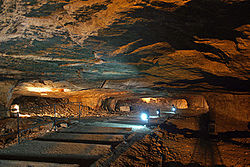Nation-building: Jerusalem's city walls

In honor of Jerusalem Day, and the fact that our daf repeatedly mentions the walled cities of the Land of Israel, let's take a quick look at our capital city's earliest Israelite walls. Historically, civilized man (or woman, perhaps) built walls. In order to delineate the home, fields, area of work, people created borders to show ownership. And in this part of the world, from Mesopotamia to Egypt, the development of walled settlements played a big role in geopolitics and ancient history. Small Jerusalem saw many a ruler over 4000 years. Most often their victory was through might of sword and a great breaching of the mighty walls, yet it was David in the tenth century BCE who conquered the Jebusite fortifications and made this the Jewish capital for eternity, by finding the way in through a small 'tzinnor', a pipe perhaps, or passageway at a point of weakness. Later, the Assyrian rise to power in 705 BCE led to Judean King Hezekiah's need to expand and stren...

